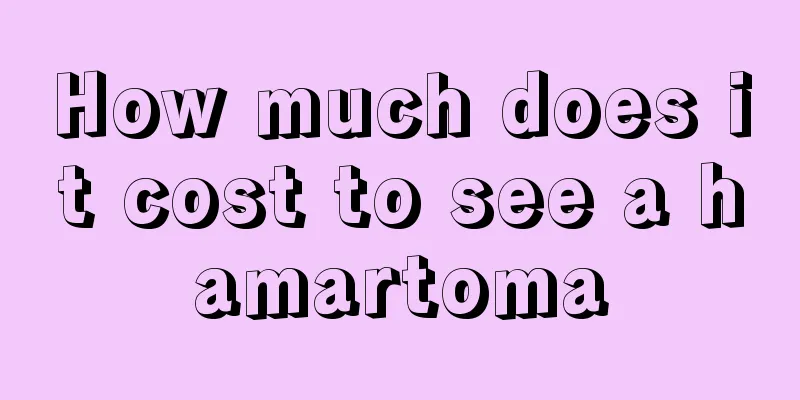Can facial nerve damage be restored

|
Nerves are an important part of the human body and have a certain impact on people's perception and ability to move. For example, facial nerves can ensure that people can make various expressions. However, many people have problems with facial nerve damage, which can actually be treated through certain methods! The following is an introduction to the treatment of facial nerve damage. 1. Facial-accessory nerve anastomosis This surgery involves end-to-end anastomosis of the central segment of the accessory nerve with the peripheral segment of the facial nerve. The surgical method is simple and has a high success rate. Most patients will have restored facial muscle movement 3 to 5 months after the operation. The disadvantage is that the sternocleidomastoid muscle and trapezius muscle innervated by the original accessory nerve will become paralyzed and atrophied, resulting in drooping shoulders. However, if the sternocleidomastoid branch of the accessory nerve is used and the trapezoidal branch is retained, scapulohumeral obstruction can be avoided; or the descending branch of the hypoglossal nerve is anastomosed with the peripheral segment of the accessory nerve to reduce the disadvantages of scapulohumeral obstruction. Surgical method: The operation is performed under local or general anesthesia, with the patient lying on his back with his head tilted to the healthy side. Starting from the root of the mastoid behind the ear on the affected side, make an incision about 7 cm long along the front edge of the sternocleidomastoid muscle to slightly below the midpoint of the muscle, separate the subcutaneous tissue, first perform blunt dissection between the upper end of the front edge of the sternocleidomastoid muscle and the parotid gland, carefully identify and free the facial nerve with the help of a surgical microscope, then go retrograde along the nerve trunk to the stylomastoid foramen, cut the facial nerve at a high position, and protect the broken end with a saline cotton pad for later use. Then free the front edge of the sternocleidomastoid muscle, turn the muscle outward, and find the sternocleidomastoid branch of the accessory nerve at the posterior edge near the midpoint of its deep surface (the trapezius branch continues to run parallel to it and enter the trapezius muscle posteriorly), cut this branch close to the muscle, and free it in retrograde motion upward so that there is no tension during the anastomosis. Then, use 7"0" non-invasive sutures to perform end-to-end anastomosis of the nerves, and 4 to 5 stitches of the epineurium are sufficient. After the operation, the incision layers were sutured as usual, and a rubber patch was placed under the skin for drainage for 24 hours. Nerve growth factor was given after the operation to promote nerve growth. 2. Facial-phrenic nerve anastomosis That is, the central segment of the phrenic nerve and the peripheral segment of the facial nerve are anastomosed end to end. This operation is more complicated than the facial accessory nerve anastomosis. The phrenic nerve needs to be freed from the neck, and then retrogradely pulled subcutaneously to the facial nerve incision for anastomosis. However, its advantage is that the phrenic nerve has a strong regenerative ability, and there are more anastomotic branches connecting the two phrenic nerves. At the same time, fibers of the 9th and 12th intercostal nerves are also incorporated. Therefore, after one side of the phrenic nerve is cut off, there is only a temporary movement disorder of the diaphragm on the affected side, which can be compensated and recovered soon. Surgical method: The method for exposing the facial nerve is as described above, and only the incision is shortened to the plane of the mandibular angle. Also, 3 to 4 cm above the clavicle, with the posterior edge of the sternocleidomastoid muscle as the center, make an incision about 5 cm long parallel to the clavicle. Separate the subcutaneous tissue and platysma muscle, free the posterior edge of the sternocleidomastoid muscle, flip it forward, and expose the anterior scalene muscle. With the help of a surgical microscope, the phrenic nerve can be seen crossing the superficial surface of the anterior scalene muscle from the posterior superior to the anterior inferior. Carefully cut the fascia along the nerve, bluntly separate the nerve to a low position, and free it downward as much as possible to obtain sufficient length, and then cut it off. Then separate it upward along the central segment of the phrenic nerve until the phrenic nerve can be retrogradely introduced from the deep surface of the sternocleidomastoid muscle into the facial nerve incision. 3. Diet and health care Depending on the different symptoms, there are different dietary requirements. Please ask the doctor specifically and formulate different dietary standards for specific diseases. |
<<: What are the advantages and disadvantages of tendon pulling
>>: Are the flowers of the osmanthus tree edible?
Recommend
Experts introduce the symptoms of early detection of bone cancer
Experts remind that the earlier bone cancer is tr...
Can aloe vera purify indoor air?
In life, many people like aloe vera very much, be...
The following is an introduction to the specific manifestations of lung cancer
There are many causes of lung cancer. We should p...
Early cure rate of endometrial cancer in China
When talking about gynecological tumors, most wom...
What tea to drink if you have bad breath
Although in most cases, people with bad breath do...
There are 5 symptoms of rheumatism in the body
Rheumatism is a common medical term in daily life...
Which hospital is good for treating prostate cancer
Which hospital is good for treating prostate canc...
Symptoms and survival time of prostate cancer in the elderly
Prostate cancer in the elderly is a malignant tum...
What are the effects of Omega 3
At least 58 kinds of diseases in our body are cau...
Cost of ovarian tumor surgery
Ovarian tumor surgery cost Ovarian cysts are beni...
Apple cheek filling failed
The apple muscles are the muscles on people's...
Tips on what to do if you don't have a bowel movement
A normal human body defecates one to two times a ...
How much does it cost to cure ovarian cancer
Ovarian cancer is a common gynecological malignan...
How to treat congenital muscular torticollis?
Congenital muscular torticollis is a common clini...









